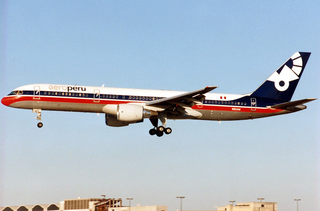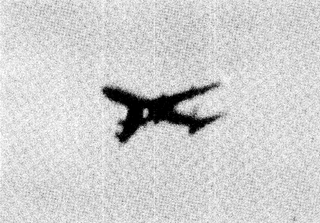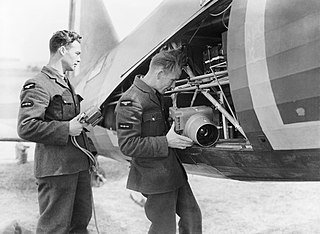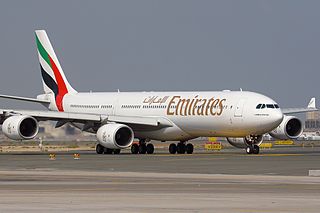Related Research Articles

In aviation, instrument flight rules (IFR) is one of two sets of regulations governing all aspects of civil aviation aircraft operations; the other is visual flight rules (VFR).

Aeroperú Flight 603 (PL603/PLI603) was a scheduled passenger flight from Miami International Airport in Miami, Florida, to Arturo Merino Benítez International Airport in Santiago, Chile, with stopovers in Quito, Ecuador, and Lima, Peru. On October 2, 1996, the Boeing 757-23A aircraft flying the final leg of the flight crashed, killing all 70 people aboard.

American Airlines Flight 965 was a regularly scheduled flight from Miami International Airport in Miami, Florida, to Alfonso Bonilla Aragón International Airport in Cali, Colombia. On December 20, 1995, the Boeing 757-200 flying this route crashed into a mountain in Buga, Colombia, around 9:40 pm killing 151 of the 155 passengers and all eight crew members.

A flight engineer (FE), also sometimes called an air engineer, is the member of an aircraft's flight crew who monitors and operates its complex aircraft systems. In the early era of aviation, the position was sometimes referred to as the "air mechanic". Flight engineers can still be found on some larger fixed-wing airplanes and helicopters. A similar crew position exists on some spacecraft. In most modern aircraft, their complex systems are both monitored and adjusted by electronic microprocessors and computers, resulting in the elimination of the flight engineer's position.

Japan Air Lines Flight 123 was a scheduled domestic passenger flight from Tokyo to Osaka, Japan. On August 12, 1985, the Boeing 747 operating the service suffered a severe structural failure and decompression 12 minutes into the flight. After flying under minimal control for a further 32 minutes, the 747 crashed in the area of Mount Takamagahara, 100 kilometres from Tokyo.

In all forms of aviation, ground crew are personnel that service aircraft while on the ground, during routine turn-around; as opposed to aircrew, who operate all aspects of an aircraft whilst in flight. The term ground crew is used by both civilian commercial airlines and in military aviation.

Pilot error generally refers to an accident in which an action or decision made by the pilot was the cause or a contributing factor that led to the accident, but also includes the pilot's failure to make a correct decision or take proper action. Errors are intentional actions that fail to achieve their intended outcomes. The Chicago Convention defines the term "accident" as "an occurrence associated with the operation of an aircraft [...] in which [...] a person is fatally or seriously injured [...] except when the injuries are [...] inflicted by other persons." Hence the definition of "pilot error" does not include deliberate crashing.

In aviation, the first officer (FO), also called co-pilot, is a pilot in addition to the captain, who is the legal commander. In the event of incapacitation of the captain, the first officer will assume command of the aircraft.

Comair Flight 3272 was a Comair flight from Cincinnati to Detroit on Thursday, January 9, 1997. While on approach for landing, the Embraer EMB 120 Brasilia aircraft crashed nose-down 18 miles (29 km) southwest of Detroit Metropolitan Wayne County Airport at 15:54 EST. All 29 aboard, 26 passengers and three crew members, were killed.

American Airlines Flight 383 was a nonstop flight from New York City to Cincinnati on November 8, 1965. The aircraft was a Boeing 727, with 57 passengers, and 5 crew on board. The aircraft crashed on final approach to the Cincinnati/Northern Kentucky International Airport located in Hebron, Kentucky, United States. Only three passengers and one flight attendant survived the crash.
A stick pusher is a device installed in some fixed-wing aircraft to prevent the aircraft from entering an aerodynamic stall. Some large fixed-wing aircraft display poor post-stall handling characteristics or are vulnerable to deep stall. To prevent such an aircraft approaching the stall the aircraft designer may install a hydraulic or electro-mechanical device that pushes forward on the elevator control system whenever the aircraft's angle of attack reaches the pre-determined value, and then ceases to push when the angle of attack falls sufficiently. A system for this purpose is known as a stick pusher.

In aviation, holding is a maneuver designed to delay an aircraft already in flight while keeping it within a specified airspace.

Royal Air Maroc Express is a regional airline and 100% subsidiary of Royal Air Maroc based in Casablanca, Morocco. The carrier operates scheduled domestic services and scheduled regional flights to mainland Spain, the Canary Islands, Gibraltar and Portugal, as well as charter services for tour operators and corporate clients. The airline is based in Mohammed V International Airport.

Indian Airlines Flight 257 was an Indian Airlines domestic passenger flight operating on the Calcutta–Imphal–Dimapur route. On 16 August 1991, the Boeing 737-2A8 registered VT-EFL crashed into the hilly terrain of Thangjing Hill during its descent, killing all 63 passengers and 6 crew members on board.

Emirates Flight 407 was a scheduled international passenger flight operated by Emirates from Auckland to Dubai with a stopover in Melbourne, operated by an Airbus A340-500 aircraft. On 20 March 2009, the flight failed to take off properly at Melbourne Airport, hitting several structures at the end of the runway before climbing and then returning to the airport for a safe landing. Although no fatalities or injuries resulted, damage to the aircraft was severe enough for the event to be classified by Australian Transport Safety Bureau as an "accident". It was subsequently determined that a data-entry error resulted in insufficient engine thrust during take off. It has been described "as close as we have ever come to a major aviation catastrophe in Australia" by aviation officials.

Afriqiyah Airways Flight 771 was a scheduled international Afriqiyah Airways passenger flight that crashed on 12 May 2010 at about 06:01 local time on approach to Tripoli International Airport, about 1,200 metres short of the runway. Of the 104 passengers and crew on board, 103 were killed. The sole survivor was a 9-year-old Dutch boy. The crash of Flight 771 was the third hull-loss of an Airbus A330 involving fatalities, occurring eleven months after the crash of Air France Flight 447.

Si Fly Flight 3275 (KSV3275) was a non-scheduled international passenger flight from the Italian capital of Rome to Pristina, Kosovo. The flight was operated by Italian airliner Si Fly using an ATR 42-300 series. On 12 November 1999, the aircraft struck a mountain during the approach to Pristina, killing everyone on board. With 24 deaths, the accident remains as the deadliest aviation disaster in Kosovo's history.

On July 7, 2017, an Airbus A320-211 operating as Air Canada Flight 759 was nearly involved in an accident at San Francisco International Airport in San Mateo County, California, United States. The flight, which originated at Toronto Pearson International Airport, had been cleared by air traffic control to land on runway 28R and was on final approach to land on that runway; however, instead of lining up with the runway, the aircraft had lined up with the parallel taxiway, on which four fully loaded and fueled passenger airplanes were stopped awaiting takeoff clearance. The flight crew initiated a go-around prior to landing, after which it landed without further incident. The aircraft on the taxiway departed for their intended destinations without further incident. The subsequent investigation by the National Transportation Safety Board (NTSB) determined that the Air Canada airplane descended to 59 feet (18 m) above the ground before it began its climb, and that it missed colliding with one of the aircraft on the taxiway by 14 feet (4.3 m).

Scandinavian Airlines System Flight 901, was a scheduled international flight operated by the Scandinavian Airlines System, that overran the runway at its destination at John F. Kennedy International Airport on February 28, 1984. The flight, using a McDonnell Douglas DC-10, originated at Stockholm Arlanda Airport, Sweden, before a stopover at Oslo Airport, Gardermoen, Norway. All 177 passengers and crew members on board survived, although 12 were injured. The runway overshoot was due to the crew's failure to monitor their airspeed and overreliance on the aircraft's autothrottle.

On 21 July 2017, a Boeing 737-800 belonging to and operated by Sunwing Airlines Inc. and operating as Thomson Airways Flight 1526 from Belfast International Airport and bound for Corfu, Greece with 185 people aboard, suffered a "serious incident" during takeoff, colliding with a runway approach light during departure. The incident was investigated by the Air Accidents Investigation Branch and determined to be the result of an incorrect temperature input into the aircraft's flight computer resulting in underperformance at take-off. The area beyond the runway and the terrain beyond were largely unobstructed, and the aircraft eventually climbed away undamaged. The remainder of the flight to Corfu was uneventful. The "serious incident" at take-off was realized and reported when airport staff subsequently observed minor ground damage. The investigation report concluded that the crew could not reasonably have been expected to recognize the anomalously low speed sooner or intervene more effectively. The report listed several examples of aircraft underperformance at takeoff, reviewed the history of relevant industry efforts, and recommended that a Takeoff Acceleration Monitoring System and associated certification standards should be developed without further delay.
References
- ↑ "Pilot Flying (PF) and Pilot Monitoring (PM)". skybrary.aero. Skybrary. Retrieved 27 March 2016.